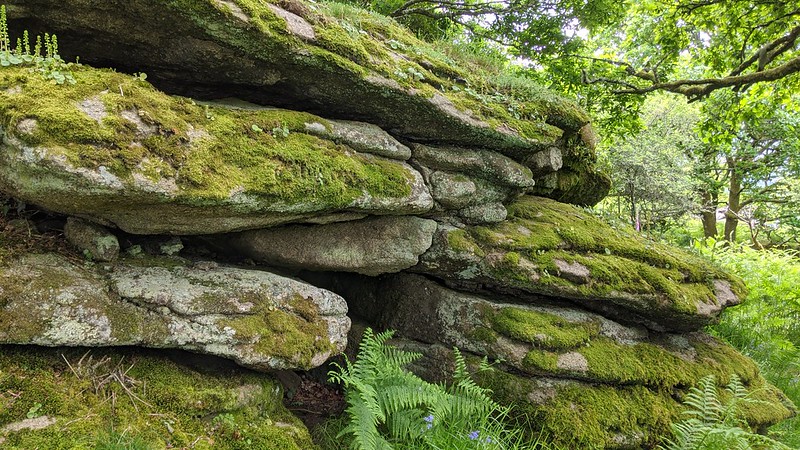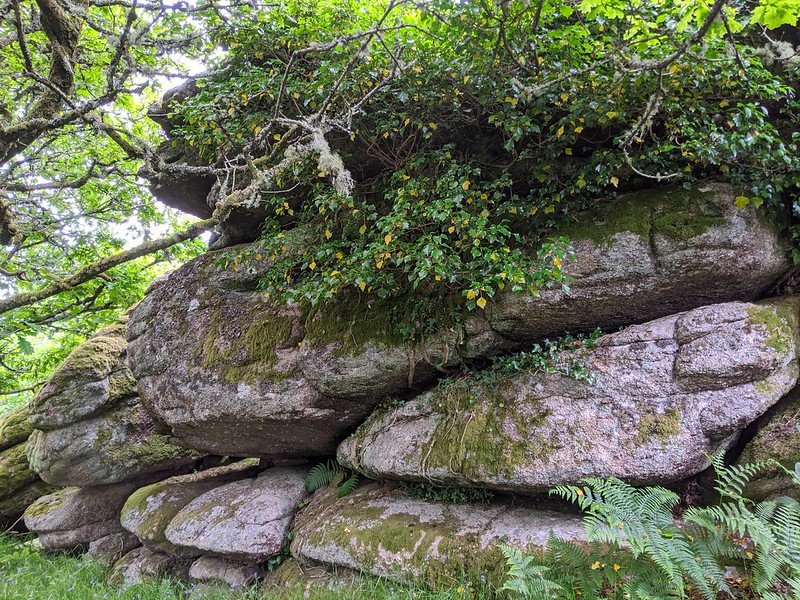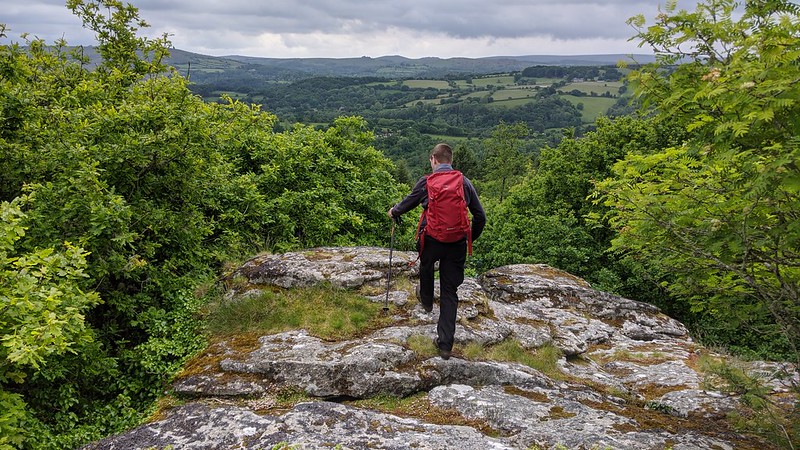TORS OF DARTMOOR
a database of both lesser- & well-known rocks and outcrops
Elsford RockAlsford Rock, Elsford Rocks
 Residing in a field above the predominantly conifer plantation of East Wray Cleave, Elsford Rock is surrounded on most sides by vegetation and is only just visible through the trees. It is a magnificent Rock, which is deserving of 'Tor' status; a huge mass of granite with several nooks and crannies and a spectacular ravine on the southern side. If you head to the top of the field you will find a simple way to step up onto the Rock and walk along its rugged crest, where you will notice some shallow rock basins. Views from here are tremendous: although somewhat hindered by the trees, the visitor can enjoy a most scenic panorama that embraces a huge swathe of East Dartmoor. The conspicuous hilltops punctuated by the tors of Hay, Hound, Chinkwell, Honeybag and Hayne Down can all be seen, with cultivated land in between and a rich canopy of trees secreting the River Wrey (Wray Brook) down in the valley below.  Clearly marked on all early Ordnance Survey Maps (called 'Alsford Rock' on Mudge's 1809 survey), the first appearance in the literature that we can find is from 1888 when William Crossing, in his book 'Amid Devonia's Alps', mentions Elsford Rock in a list of the "Tors and Rock Piles in the neighbourhood of Chagford, Drewsteignton, Lustleigh and Bovey". In his 'Guide to Dartmoor', he later describes the route from Lustleigh for anyone wishing to visit, but once again omits any details of its appearance. The wall to the immediate south of the Rock acts as part of the parish boundary of Lustleigh and Bovey Tracey, with Moretonhampstead meeting at a triple junction nearby.  It would seem that Elsford Rock was once of great interest. In the Devon and Exeter Gazette, dated 4th February 1903, there was an article headlined 'The New Railway - An Interesting Discussion' describing a lecture about the building of the Exeter Railway, at the Exeter District Chamber of Commerce. The speaker, a Mr F. Collins went on to laud the area; "The railway opened up that little visited portion of Dartmoor which lay between the Okement and Teign rivers - an extremely beautiful bit of country. Few people knew of the existence of such scenes as could be found in that direction... Among places in this neighbourhood were Hel Tor, 1,036 feet above sea level; Blackington, Hennock and Beadon Brooks, Elsford Rocks... The various places of interest in the district were shown on the screen, and illustrated the unrivalled beauty of the scenery."  Although the Rock is situated on private land, the landowners kindly permit access and the easiest way to reach it is to head to a little gate (SX 78601 82961) at the end of one of the forestry tracks in East Wray Cleave (this section recently felled as of 2022). It is well worth perambulating and exploring Elsford Rock; it is one of Dartmoor's gems, rarely visited, and offers some of East Dartmoor's finest vistas.
| ||||||||||||||||||||||||||||